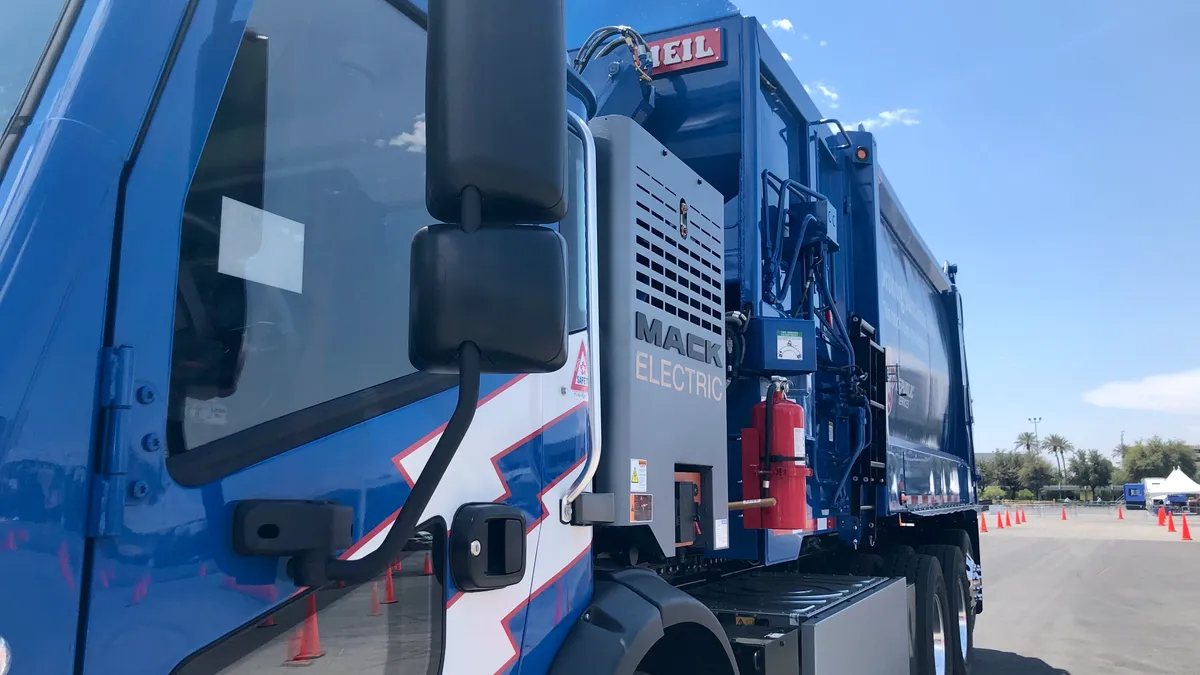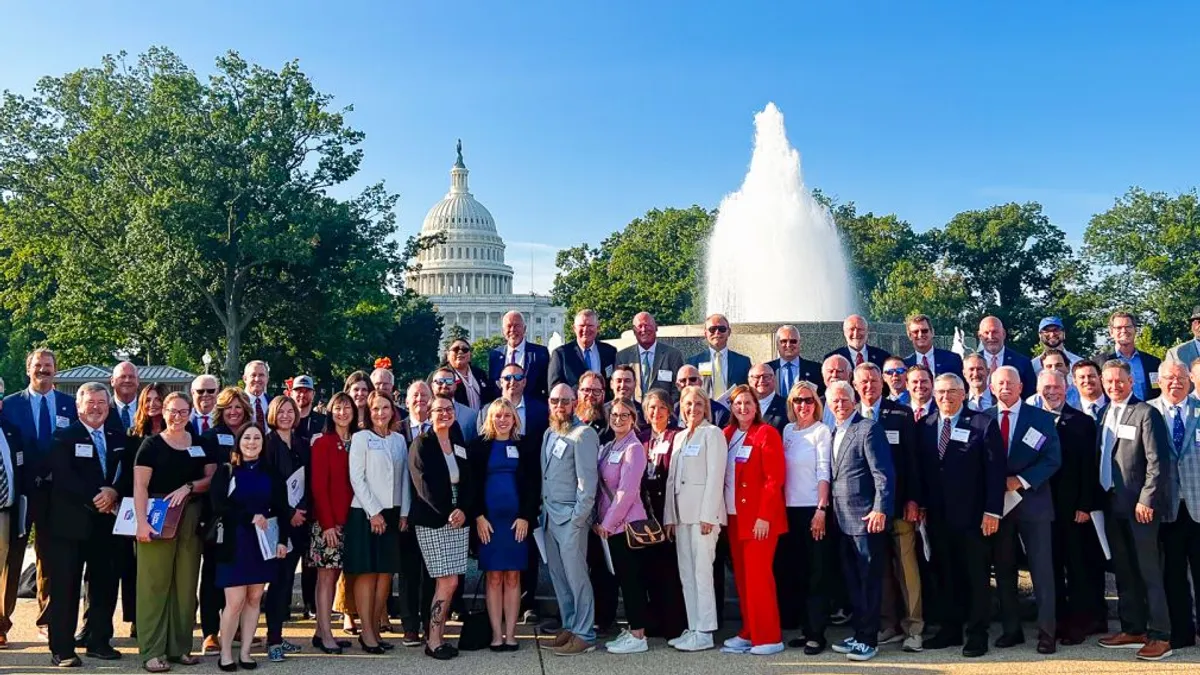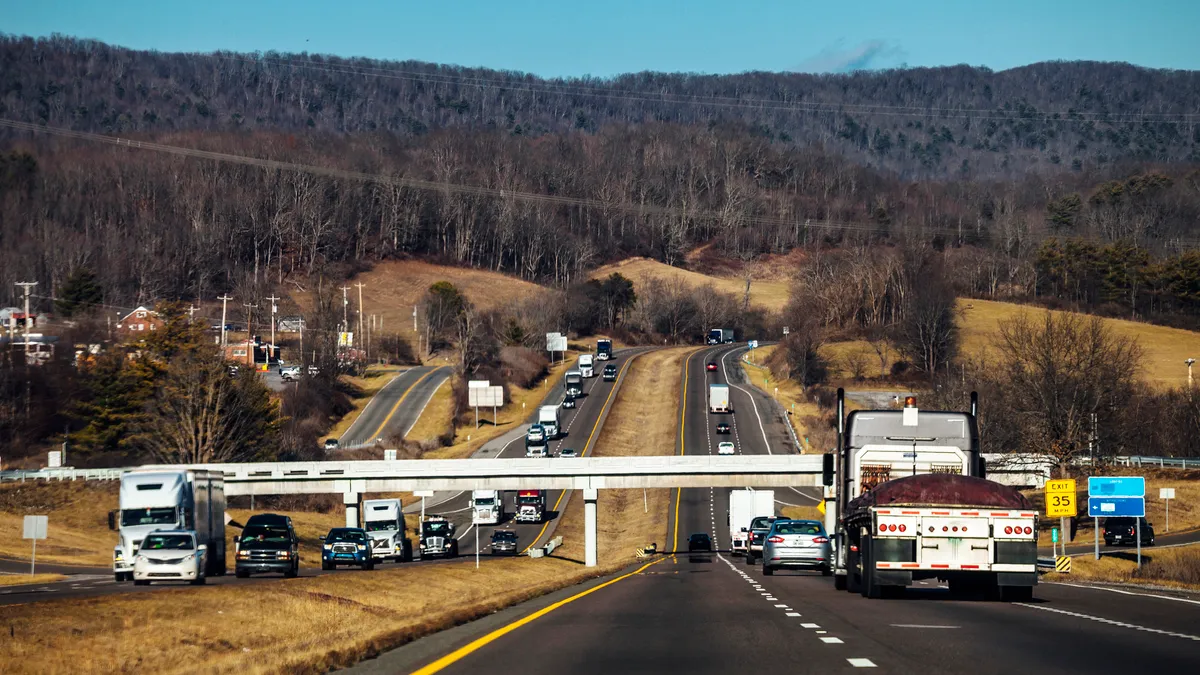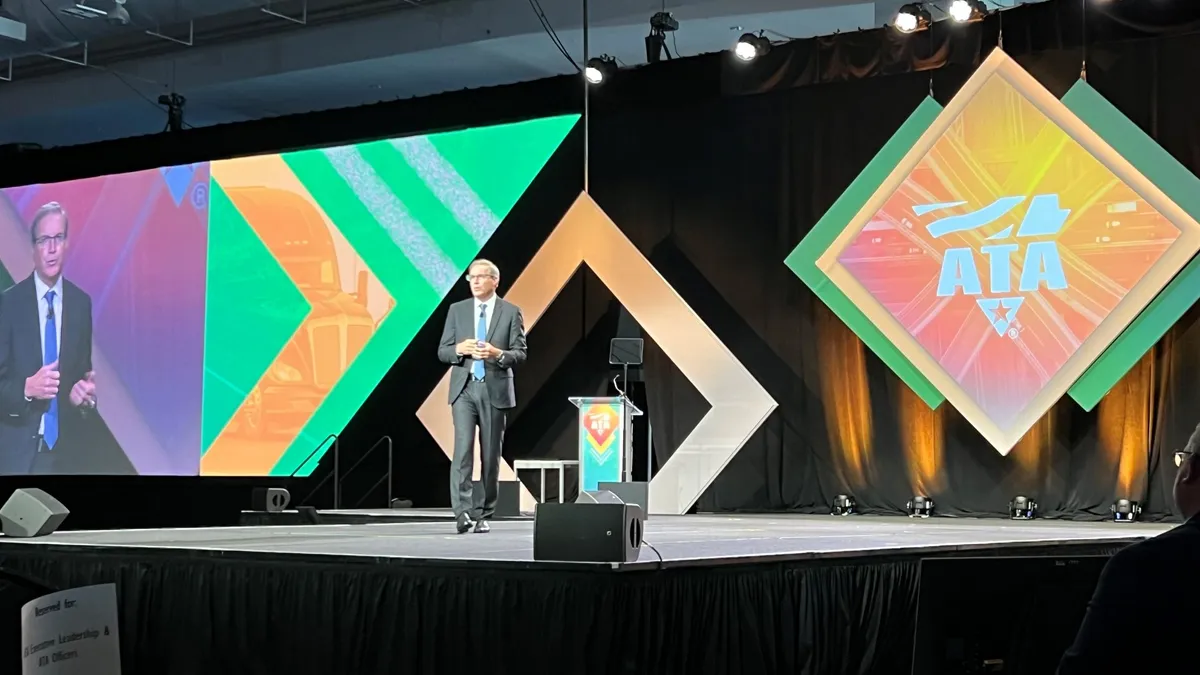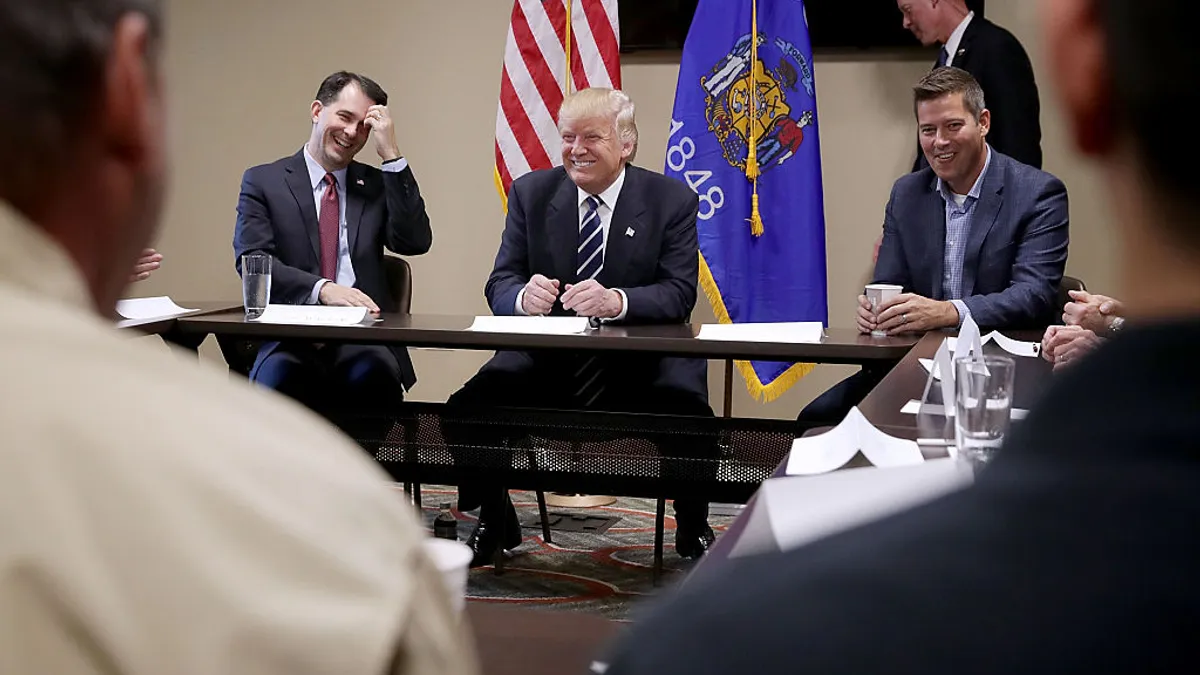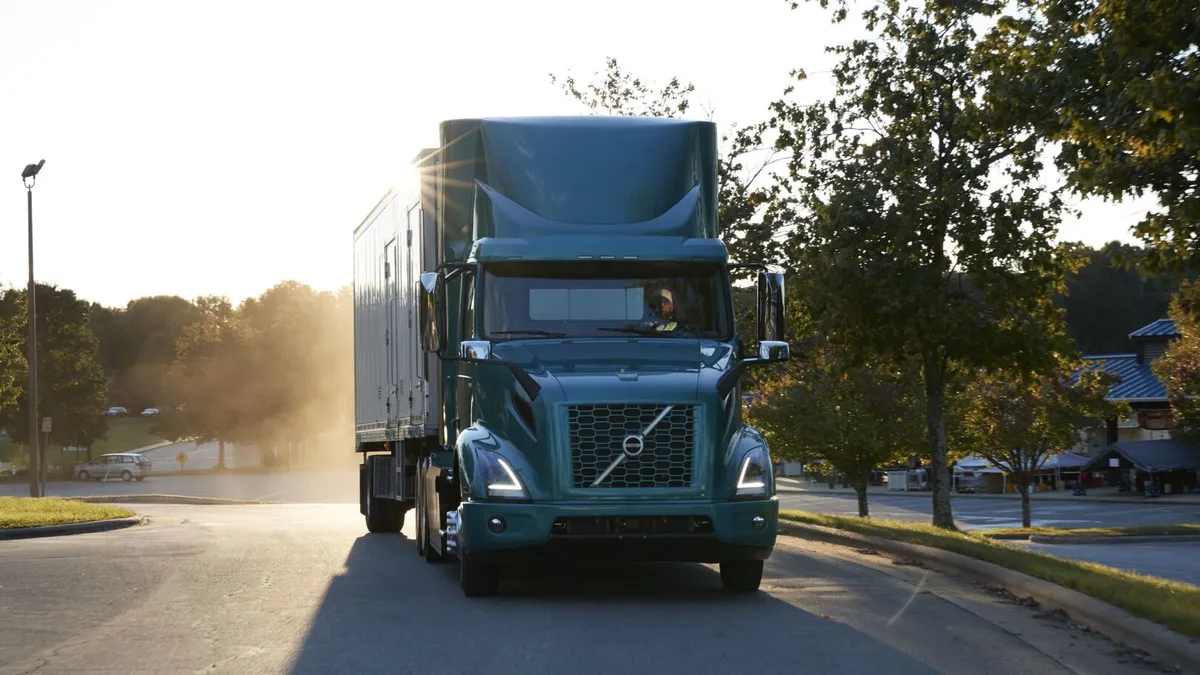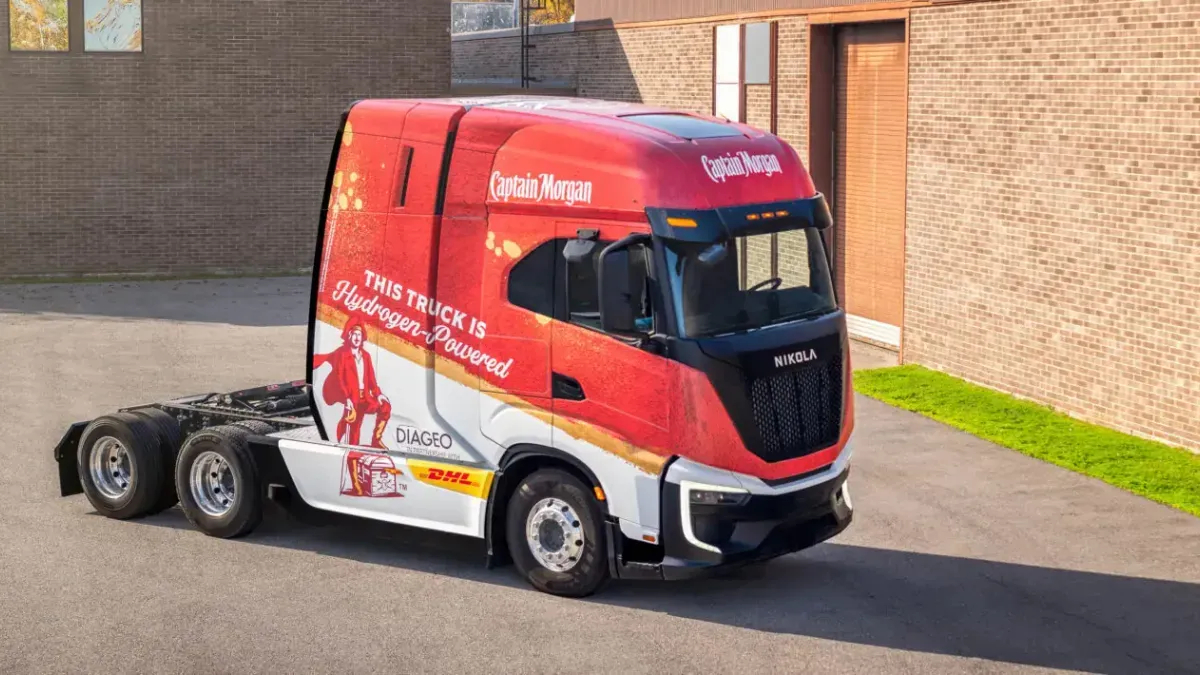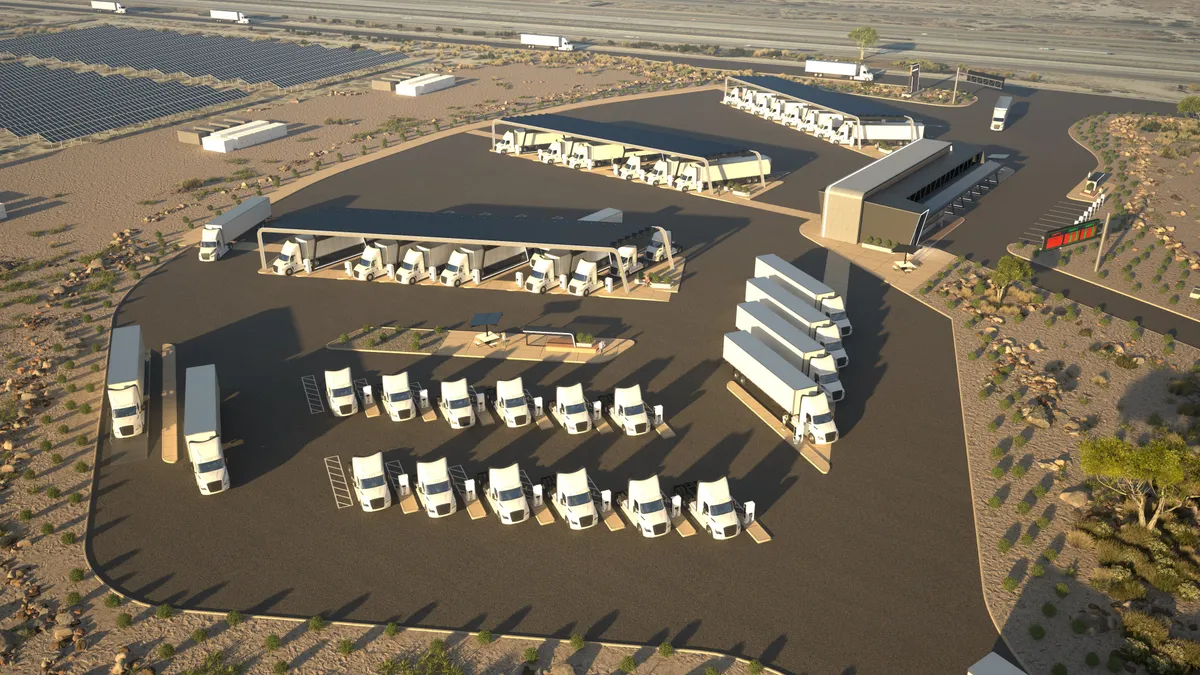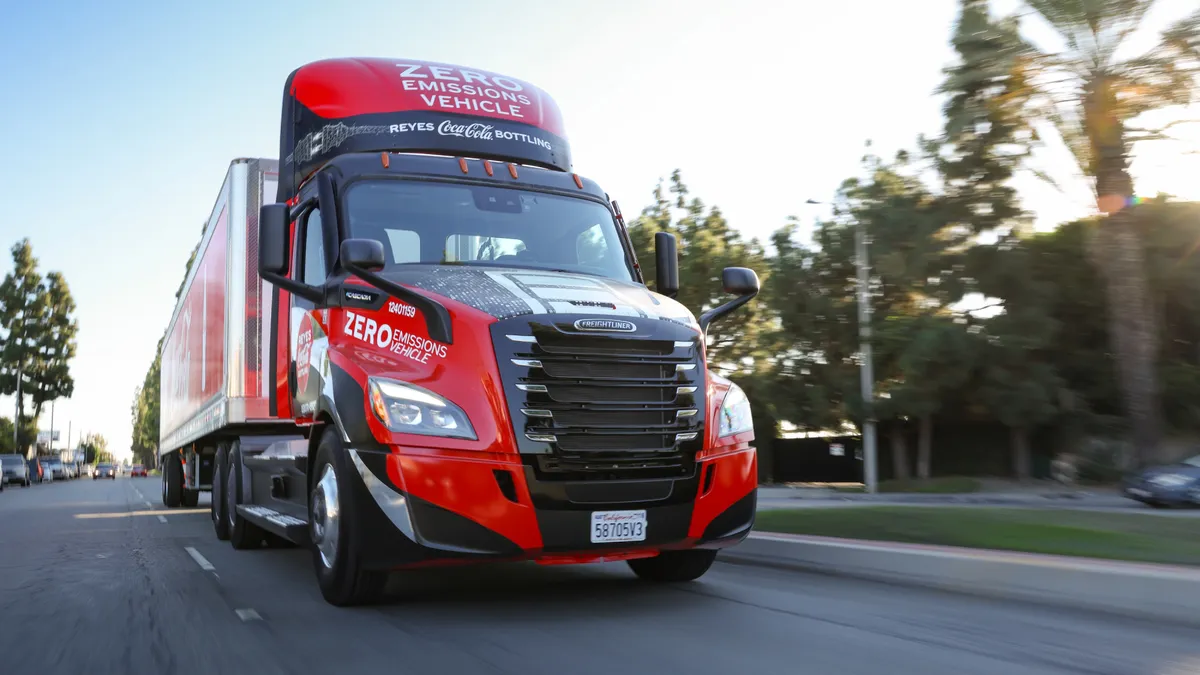WasteExpo events the past few years have featured introductory sessions on battery-electric trucks. This year, there were numerous models on display and one available for test drives outside.
Leaders and speakers discussed widespread adoption of the technology, though not imminent, as inevitable in the future.
The cities of New York and Los Angeles have ambitious goals for reducing greenhouse gas and fleet electrification that were announced just prior to pandemic shutdowns in 2020. New York pledged for the city's entire municipal vehicle fleet to be fully electric by 2040, just preceded by LA committing to have a zero-emissions fleet by 2035.
The New York City Department of Sanitation began service with the Mack LR Electric truck last September, a model that Mack is also piloting with Republic Services. The department initially pitched itself as a good candidate to test the vehicle given the diversity of geography, road grade and pickup site type within the city's five boroughs, according to Jonathan Randall, senior vice president of sales and commercial operations for Mack Trucks.
"We're really able to test the full spectrum of the capability," he said, adding that the pilot taught them about pickup cycles, actual versus expected battery drain, regenerative braking gains and more.
Randall noted the partners also became more aware of a need for noise generators, flashing lights or some other safety signal to pedestrians given the unfamiliar quietness of electric trucks compared to traditional diesel-powered ones.
The sanitation department now plans to purchase seven additional Mack trucks, the partners announced this week. Deputy Commissioner of Support Services Rocco DiRico said the next step is to have one truck in each of seven zones (Brooklyn North and South, Queens East and West, Staten Island, Manhattan, and the Bronx).
The hope is that a next-generation version of Mack's truck will have the capacity to plow snow from roads, a relatively unique function of the New York City Department of Sanitation compared to other city sanitation agencies. That means a truck would require 12 hours of power, plus the extra drain that plowing function requires.
Going forward, "it's about the cost of the batteries. It's the battery density, it's the performance ... and getting to the point where it's a one-for-one replacement to diesel, because you don't want to have to buy two electric trucks to do the job that one diesel does. And so we continue to strive towards that," Randall said.
DiRico described some of the challenges with charging, including not having adequate space in facilities to complete all fleet charging inside a facility.
As for broader-scale electrification infrastructure advocacy, when asked about whether Mack collaborates with others in the space on infrastructure expansion goals, Randall said not formally, although there could be plug compatibility across vehicle brands.
Other municipalities looking to build out electric fleets cannot afford to overlook the steps their electricity needs may require, said Robert Potter, sanitation solid resource manager at Los Angeles Sanitation and Environment.
"Electric is not easy," he said. "In our infinite understanding of trucks we have, I personally have a lack of understanding of electricity. So I thought, 'Hey, I bought an electric truck I plugged into the wall next to the break room, tomorrow morning I'd load it up and drive off.' That's not the case."
Potter said his team found most of their facilities were not yet ready to support refuse fleet electrification. They needed to set up regeneration stations, and put in electric boxes, transformers and the like, which he said could sometimes take up to two years.
"If I ordered a truck and I got it in nine months, it may sit for 14 months waiting for the ability to plug it in," Potter said. "So, you have to be early in the game, looking at your electrical feed at your facilities to ensure that it has enough power — don't make that assumption."
Potter emphasized the importance of having a good relationship with your power provider and vendors, and of leveraging grant funding where possible. He said Los Angeles Sanitation and Environment was still in manufacturer negotiations and that it would be another week or two before signing a deal, but that it's working with vendors it already uses. It expects to have a truck on the road in Q1 2022.
Electrification came up in other sessions as well, highlighting some of the other barriers that exist to adoption.
Michael E. Hoffman, a managing director at Stifel, noted that while all major companies are exploring battery electric options, key constraints still include hours of service and payload, and not being ideal for highway driving that runs down batteries at high speed.
Waste Connections CEO Worthing Jackman said for his company, electric is "definitely where we're heading," but the timeline is unclear. Whether the company will "really make a dent" on electric in five, seven or 10 years depends on manufacturing capacity, he said.
Waste Connections has an electric vehicle partnership with Canadian manufacturer Lion Electric, which did not have an official presence at WasteExpo.
But a handful of other players in the space were at the show. Among them were Peterbilt, which recently delivered the first production Model 220 to the Anchorage Department of Solid Waste Services in Alaska, and Los Angeles-based Battle Motors, which in late June announced its first delivery of a battery electric truck to Liberty Ashes, a New York City-based private hauling company. Rubicon, another show participant, recently announced plans to extend XL Fleet's electrification offerings to its network partners.



